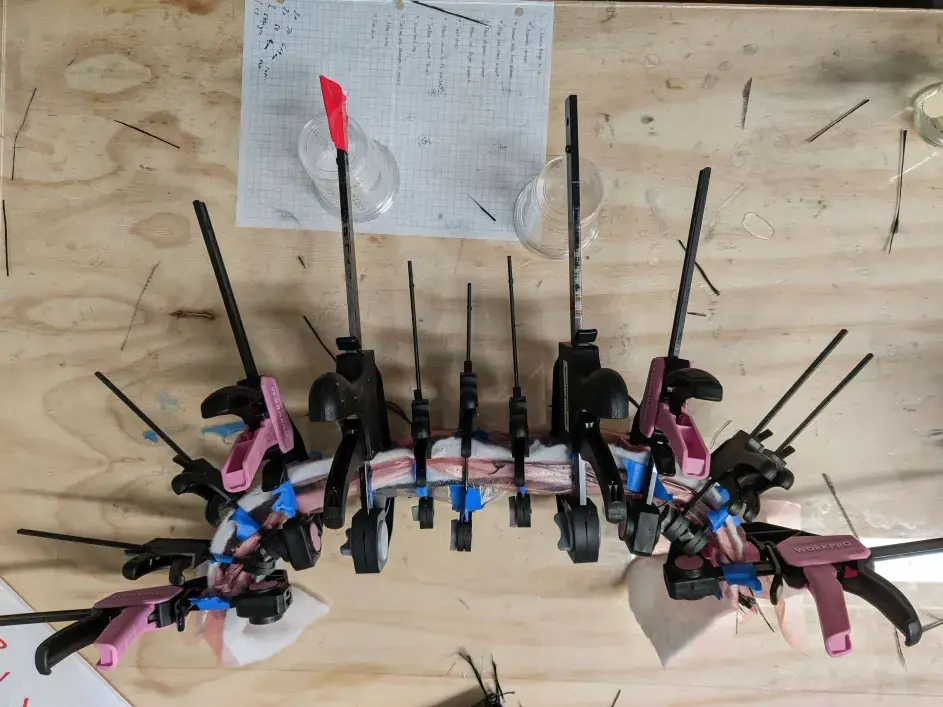
With the flight readiness review just two weeks away, and the previous rear landing gear broken, the team needed to ensure the next rear landing gear does not fail. 32 layers of plain weave carbon fiber were laid on a smooth glass surface, and laminated with slow-cure resin. A 3D printed mold was assembled, and layers of plastic, breather fabric, and perforated release film were added. The wet carbon fiber were laid into the mold, and the mold was clamped shut. After 48 hours of curing, the mold was opened. The mold came off cleanly, and no excess epoxy was left in the landing gear.
Several steps had to be done to get the landing gear ready. First, the numerous sharp edges and corners had to be cut off. A metal bandsaw was used to cut the landing gear outside, while constantly utilizing a vacuum to suck away harmful carbon fiber dust. Holes were made to fit two 4" wheels on the sides, and 4 holes in the core to mount to the fuselage. The most important and thrilling part of the production was, of course, the testing. The rear landing gear must be capable of surviving hard emergency landings. The project lead intern volunteered to test: applying his full body weight onto the rear landing gear, hard sharp sounds were heard. Those were the sounds of the landing gear deforming to hold the weight; deforming to sustain 140 pounds of force without damage. The team successfully verified that the minimum maximum load capacity of the rear landing gear is 140 pounds; 7 times greater than the weight of the aircraft. The true maximum is yet to be found.